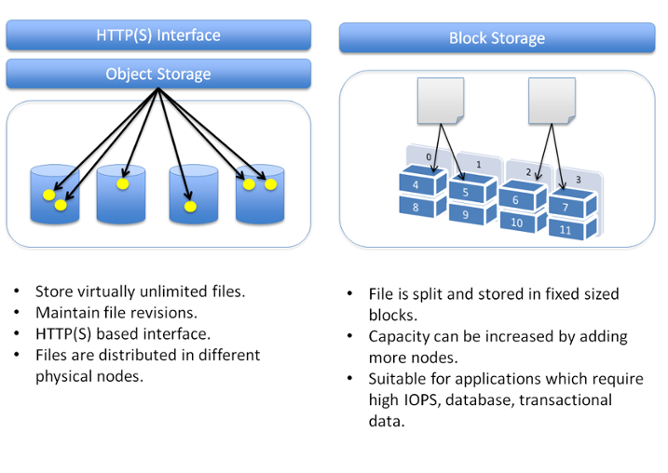

It manages data as - get this - objects! These objects are stored in a flat address space, in contrast with block storage’s more hierarchical structure.

If you allocate block storage space, you’ll be paying for it, even if you aren’t using it. Contrasted this with object storage, which can be accessed over an API from anywhere.īlock storage metadata is limited to basic file attributes, whereas object storage can tag objects with metadata that makes search and retrieval easier.īy its nature, block storage is much more expensive than object storage. Block storage requires much more management at the operating system level, whereas object storage abstracts that all away for you.īlock storage is tied to a single server at any one time. Decisions on permissions, versioning, and backups must all be given consideration. Though block storage is flexible, it still requires much more administration and hands-on work than object storage. Individual blocks can be modified, rather than the entire file as with object storage. Modifying files is also much more flexible than object storage. Block storage can also be imaged and moved fairly easily between servers. Object storage, in comparison, doesn’t do so well here and shouldn’t be used for data-heavy applications.Īdding block storage volumes is simple and has few performance impacts. Database servers and analytic-heavy workloads are two areas where block storage shines. It’s the most commonly used storage type for most applications.īlock storage is reliable and fits right in with applications that require a high number of IOPS and low latency. It’s been the old paradigm and will continue to be used for mounting disks to servers. Benefitsīlock storage is familiar to developers and applications. With the rise of cloud computing, block storage can now be purchased from AWS Elastic Block Storage, Rackspace Cloud Block Storage, Azure Premium storage, and many more. There’s no metadata associated with each block and because data is split in this way, performance is better when block storage and applications are closer together. Block storage can be directly written to by nearly any application.īlock storage is called such because each unit is a separate piece of the file, identified with a unique id. It can be formatted with a filesystem, used to store files, or used as a database backend. On-premises storage like SAN, iSCSI, and local disks are all examples of block storage.īlock storage is treated like any other system disk. Block storage providers allow a block storage device to be provisioned to any size and attached to virtual machines with ease.

Accompanying decoupling of data from a particular application, with the same repository used by many workloads.īlock storage has been used for many years and is simple and familiar.Heightened the use of data lakes or other techniques that aggregate data from various sources in different formats.Concurrent, real-time storage access from large numbers of users from multiple locations.

Accumulation of immense databases that can span anywhere between hundreds of terabytes/petabytes.Exponential growth in the volume of unstructured data such as text, images, audio, and video.Today you could blink and accidentally transmit and store 1 gigabyte worth of metadata in the cloud. In 1990 (and before the cloud) 1 gigabyte of storage roughly cost $10,000. We will then investigate the pricing differences and draw comparisons between the two, allowing you to choose the correct option for your use case.Īs more and more processes become digital or digital-first, the amount of data stored in the world continues to increase. At Taloflow we recently launched a way for companies migrating from AWS/GCP/Azure to 3rd party object storage providers like Storj to receive an objective TCO analysis of all the switching and storing costs associated.īut what exactly is object storage - and how does it compare to block storage? For both, we will cover the technical description, benefits, and application use-cases.


 0 kommentar(er)
0 kommentar(er)
